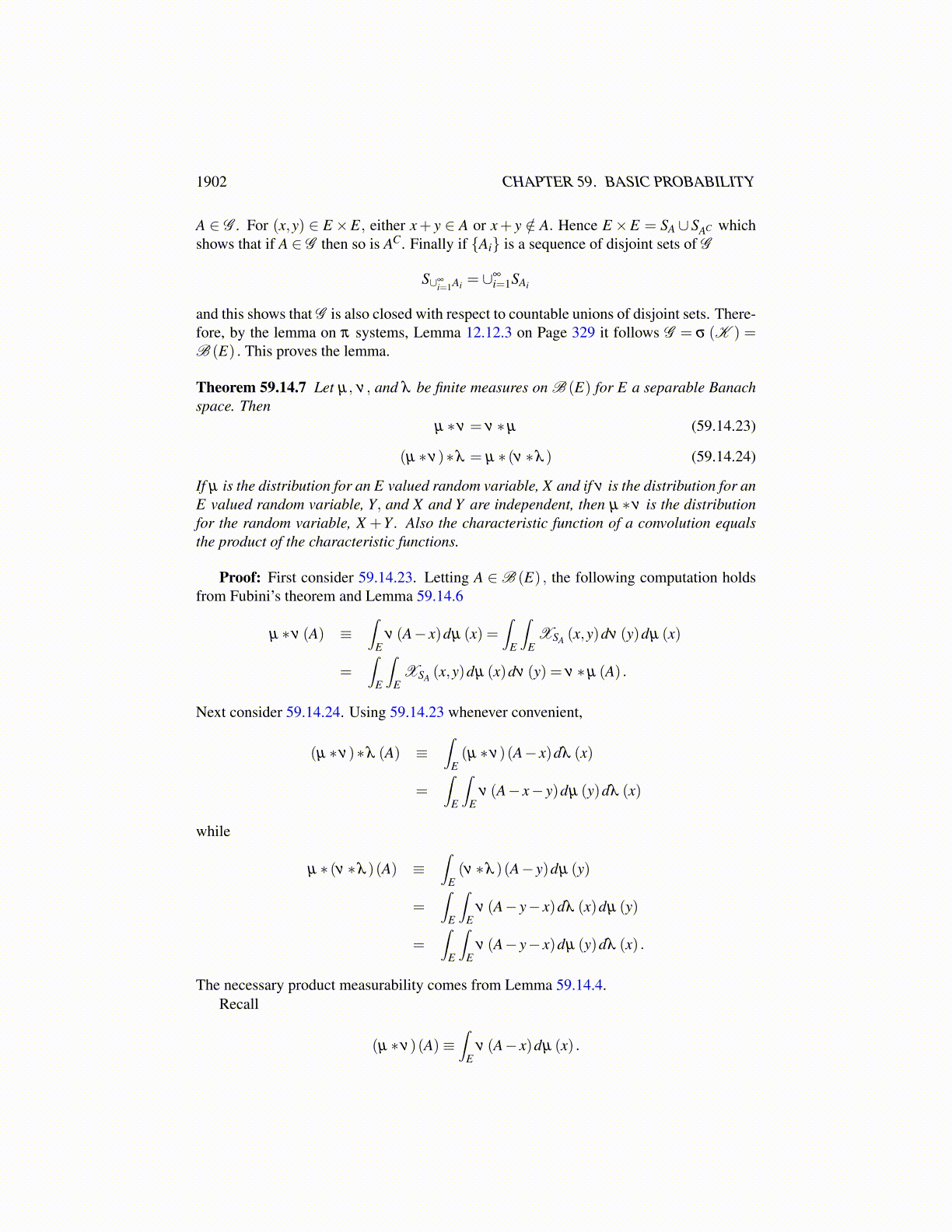
1902 CHAPTER 59. BASIC PROBABILITY
are Borel measurable functions. Furthermore, the above functions are
B (E)×·· ·×B (E)
measurable where the above denotes the product measurable sets as described in Theorem12.12.6 on Page 332.
Proof: First consider the case where A =U, an open set. Let
y ∈
{x ∈ Em : µ
(U +
m
∑i=1
xi
)> α
}(59.14.22)
Then from Lemma 59.1.9 on Page 1859 there exists a compact set, K ⊆U +∑mi=1 yi such
that µ (K)> α. Then if y′ is close enough to y, it follows K ⊆U +∑mi=1 y′i also. Therefore,
for all y′ close enough to y,
µ
(U +
m
∑i=1
y′i
)≥ µ (K)> α.
In other words the set described in 59.14.22 is an open set and so y→ µ (U +∑mi=1 yi) is
Borel measurable whenever U is an open set in E.Define a π system, K to consist of all open sets in E. Then define G as{
A ∈ σ (K ) = B (E) : y→ µ
(A+
m
∑i=1
yi
)is Borel measurable
}
I just showed G ⊇K . Now suppose A ∈ G . Then
µ
(AC +
m
∑i=1
yi
)= µ (E)−µ
(A+
m
∑i=1
yi
)
and so AC ∈ G whenever A ∈ G . Next suppose {Ai} is a sequence of disjoint sets of G .Then
µ
((∪∞
i=1Ai)+m
∑j=1
y j
)= µ
(∪∞
i=1
(Ai +
m
∑j=1
y j
))
=∞
∑i=1
µ
(Ai +
m
∑j=1
y j
)
and so ∪∞i=1Ai ∈ G because the above is the sum of Borel measurable functions. By the
lemma on π systems, Lemma 12.12.3 on Page 329, it follows G = σ (K ) = B (E) . Sim-ilarly, x→ µ
(A−∑
mj=1 x j
)is also Borel measurable whenever A ∈B (E). Finally note
thatB (E)×·· ·×B (E)